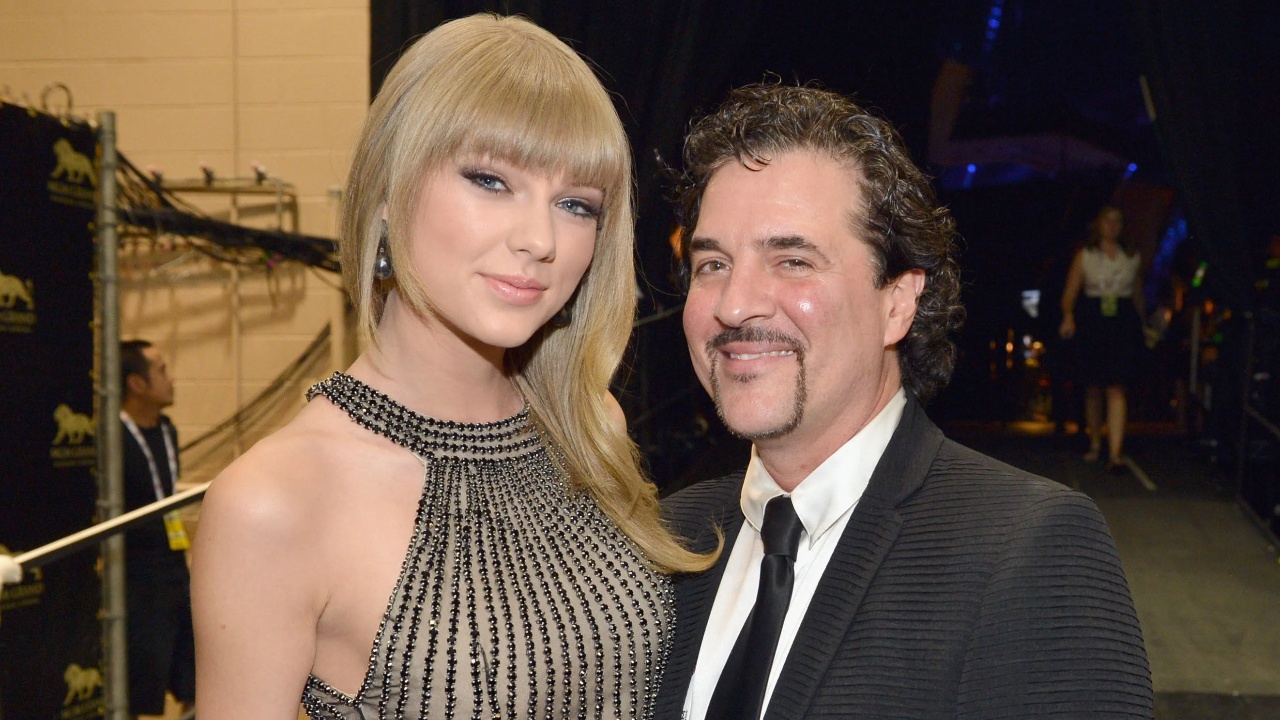Taylor Swift has always been a master storyteller, but in “Father Figure,” from her new album The Life of a Showgirl, she spins one of her most cunning and layered tales yet. The song immediately sparked fervent debate among fans, not just for its provocative title but for its stark portrayal of a corrosive relationship within the music industry. While it borrows from a classic, the track is a distinctly Taylor Swift creation—a sinister reimagining that swaps romance for a chilling narrative of mentorship, exploitation, and ultimate reclamation of power.
The song cleverly uses an interpolation of George Michael’s 1987 hit of the same name, a move officially approved by his estate, which stated they “had no hesitation” in agreeing to the association and felt George would have approved. However, Taylor subverts the original’s intimate tone.
Where George Michael sang from a place of loving devotion, wanting to be a “preacher, teacher,” and “daddy,” Taylor’s version is sung from the perspective of a powerful, cynical music executive who positions himself as a protector while openly admitting his “love is pure profit.” This perspective shift turns the song into a gripping character study and a pointed critique of the industry’s power dynamics.
You Might Like: Who Is “Actually Romantic” About? Lyrics Meaning
A Deal with the Devil: The Lyrical Story of “Father Figure”
The lyrics of “Father Figure” paint a vivid picture of a manipulative relationship. The narrator finds the protagonist “young, wayward, lost in the cold” and boasts of turning her “rags into gold.” He offers himself as a “father figure,” a mentor who promises to guide and protect, constantly urging her to “Leave it with me” as he claims to “protect the family”—a phrase laden with Mafia-like undertones. This protective veneer, however, quickly cracks to reveal his true motives. Lines like “I can make deals with the devil because my d–k’s bigger” and “This love is pure profit / Just step into my office” expose the relationship as a transactional one built on power and control, not genuine care.
“I can make deals with the devil because my d*ck’s bigger”
— Taylor Swift on “Father Figure” pic.twitter.com/JV5nf7WHdf
— Buzzing Pop (@BuzzingPop) October 3, 2025
The song’s narrative arc reaches its climax when the perspective subtly shifts. The bridge reveals a betrayal, as the narrator laments that “thoughtless ambition” led to “foolish decisions” and the belief “that to fulfill your dreams / You had to get rid of me.” This sparks a dramatic turn. The final chorus transforms from the narrator’s boastful “I’ll be your father figure” to a triumphant declaration from the other side: “I was your father figure… You made a deal with this devil, turns out my d–k’s bigger.”
The song culminates in a powerful threat—”You’ll be sleeping with the fishes before you know you’re drowning”—and the ultimate claim of victory: “This empire belongs to me.” This shift signifies the protagonist, Taylor herself, seizing control and becoming the most powerful figure in the room.
The Real-Life Inspiration Behind the Song
So, who is this “father figure” based on? The overwhelming consensus points to Scott Borchetta, the founder and former CEO of Taylor’s first record label, Big Machine Records. The lyrics perfectly mirror their public fallout. Borchetta was the executive who signed a young Taylor Swift, the man who supposedly saw her potential and helped turn her into a star. Their relationship soured when she left his label, and he subsequently sold her master recordings to Scooter Braun, a deal Taylor famously described as her “worst case scenario.”
In “Father Figure,” the narrator’s anger over a lost “protégé” and the line “you made a deal with this devil” seem to directly reference Borchetta’s decision to sell her masters to Braun. The song’s entire storyline, from the initial mentorship to the bitter conflict over ownership of her work, echoes Taylor’s real-life battle to own her music, a battle she finally won earlier this year when she purchased all of her masters back.
While some fans briefly speculated the song could be about a rival artist, the lyrical evidence firmly anchors it in Taylor’s professional journey, serving as both a personal catharsis and a cautionary tale for young artists about the perils of industry “family” members who prioritize profit over people.








